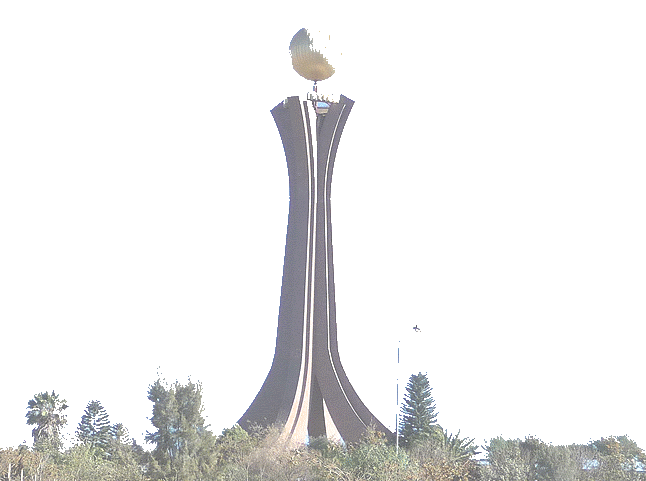A Bitter Path to Sovereignty: The Strategic Dilemmas Facing Tigray Today
Introduction
Almost three years have passed since the signing of the Pretoria Agreement between the Federal Democratic Republic of Ethiopia (FDRE) and the Tigray People’s Liberation Front (TPLF). While the guns have largely fallen silent, the promise of peace and restoration for Tigray remains tragically unfulfilled. Tigray entered the Pretoria Agreement with cautious hope—hope that the silence of guns would usher in the dignity of restoration. Yet what followed was not peace, but paralysis; not healing, but abandonment.
No meaningful progress has been made in reinstating Tigray’s constitutional rights, nor in the urgent rehabilitation of its devastated social fabric. The healthcare system remains in ruins, and malnutrition stalks a generation. Millions of Tigrayan internally displaced persons (IDPs) continue to languish in makeshift camps, their lives on hold. Tigray has consistently appealed to the international community to enforce the agreement, but these calls have met a deafening silence. The world watches with an indifference that makes a mockery of principles like the “Responsibility to Protect,” as the specter of renewed conflict looms, orchestrated by forces determined to extinguish Tigray’s political vitality.
Prime Minister Abiy Ahmed Ali, far from upholding the spirit of peace, appears to be working relentlessly to weaken Tigray. His tactics are insidious, ranging from sowing discord among Tigrayan elites to, more alarmingly, publicly arming and training Tigrayan youth against the Tigray Defense Forces (TDF). Abiy’s grand design is less about national unity and more about a political reengineering of the Horn—a project in which Tigray is seen not as a partner, but as a historical anomaly to be erased. His obsession with the Red Sea is not just strategic—it is existential, fueled by fantasies of restoring an imperial image under an Oromo-dominated center.
The Peril of Pure Politics: A Call for Proactive Defense
With this scenario unfolding, Tigray is compelled to find every means necessary to defend itself from a potential second round of genocidal war. For too long, Tigrayans have adhered to a “rationality” that our adversaries have ruthlessly abandoned. In a political landscape defined by the cruelty of actors like both Abiy Ahmed and Isaias Afwerki, waiting for the fire to reach our own house is a luxury we can no longer afford. The imperative is clear: to leverage every available strategic calculation for survival, even if it means engaging in uncomfortable alliances.
Some mistake Tigray’s restraint for weakness. But it is precisely this refusal to engage in reactive violence that has preserved its moral capital. Yet morality without survival is a eulogy. The time has come to distinguish between ethical paralysis and ethical pragmatism. Paradoxically, Abiy’s own machinations may provide openings. He has reportedly urged the TDF to join him in punishing the Eritrean regime, an offer the Tigray interim administration has rightly refused, prioritizing the return of its IDPs and the restoration of its territory. This principled stance has evidently incensed Abiy, making his next move a matter of when, not if.
A Metaphor for Necessity: The Agonizing Choice
This contemplation of tactical alliances has, predictably, swayed opinions to two extremes. Some perceive it as forgiving Isaias Afwerki’s past deeds, while others condemn any engagement as political suicide. My perspective is different.
Consider the metaphor recounted by the astute politician Kidane Amene: a young man, traveling with his aging parents, reaches a swift, boggy river. He carries his father across and returns for his mother. Mid-river, a flash flood strikes. His father, seeing the danger, shouts for him to abandon his mother and save himself. The young man, in an agonizing moment, realizes he cannot save them both and lets her go to save himself.
Tigray finds itself in that river. It has no luxury of ideal choices; it must choose the path that ensures its survival. A tactical alliance is not an exoneration of past crimes. It is a temporary convergence of interests under duress, where survival—not trust, not loyalty—dictates the terms.
Strategic Imperatives: Navigating the Double-Edged Sword
A tactical engagement with Isaias must be approached with cold assumptions. This is not about friendship; it is about strategic self-preservation. Such alliances, historically fraught with peril, can only function if based on a coldly calculated, temporary convergence of existential interests, governed by strict, verifiable terms.
Scenario 1: Abiy attacks Tigray first. The immediate goal must be to ensure Eritrean neutrality. Tigray could seek assurances of non-aggression and safe passage for civilians, leveraging Isaias’s own fear of Abiy’s regional ambitions to prevent a devastating pincer movement.
Scenario 2: Abiy attacks Eritrea, bypassing Tigray. Tigray has significant leverage. It can demand, unequivocally, that Eritrea first admit its genocidal role, seek pardon from the Tigrayan people, withdraw from all occupied Tigrayan land, and return all detainees. Only then could Eritrea expect Tigray’s non-interference.
Scenario 3: Abiy attacks both simultaneously. In this most dangerous scenario, a tactical defensive relationship with Isaias becomes a matter of shared survival. Such a pact would be temporary and self-serving for both, but it would fundamentally complicate Abiy’s plans and could precipitate his demise.
Similarly, contemplating understandings with segments of the Amhara Fano, while paradoxical, falls under the same umbrella of necessity. The goal is not historical revisionism, but finding a common enemy in Abiy’s hegemonic agenda to fragment his power base and create strategic space for Tigray.
The Brigade N’Hamedu Dilemma: Tactical Necessity vs. Strategic Vision
This contemplation of alliances has understandably caused a sense of betrayal among allies like the Eritrean youth movement, Brigade N’Hamedu. This creates a painful but unavoidable strategic paradox. It is vital for Tigray to manage two parallel tracks: a tactical track for immediate survival and a strategic track for a shared democratic future.
The tactical engagement with the PFDJ, if it occurs, is a bitter pill swallowed to survive today. It does not negate the strategic vision of a democratic Eritrea and a deep, brotherly bond with the Eritrean people. In fact, tactical leverage can serve strategic ends. If Abiy attacks Eritrea, Tigray could make its non-interference conditional on the PFDJ allowing space for opposition movements, linking its immediate security needs to the long-term aspirations of its natural allies.
Eastern African Geopolitics: A Shifting Chessboard
The broader regional dynamics are critical. The conflict in Sudan, Abiy’s Red Sea ambitions, and the growing tensions with Egypt create a fluid environment. A destabilized Sudan could offer new supply routes or diplomatic leverage. Egypt’s opposition to Abiy’s expansionism could create an alignment of interests. Tigray’s foreign policy must be agile and transactional, identifying potential partners among any actor whose interests temporarily converge with Tigray’s survival against a threatening Addis Ababa.
This is a dirty game where wolves do not play by the rules of sheep. Tigray must now demonstrate its own strategic cunning.
Emerging Red Sea Dynamics and the Inevitable Pivot
Abiy’s ambition to secure Red Sea access, likely via Assab, is nearing execution. He knows he cannot achieve this with a defiant Tigray at his back. It is therefore highly probable that he will strike Tigray first, framing it as a “stabilization” operation to neutralize any threat to his legacy project.
This forces Tigray to confront a bitter truth: its survival cannot be permanently secured within the Ethiopian federation, nor under any future Addis Ababa-centered regime hostile to Tigrayan autonomy. The Pretoria Agreement has failed. The idea of flourishing within a centralized Ethiopia is no longer sustainable.
Tigray must therefore begin to build toward a future beyond Ethiopia. That future has only two viable paths:
- Full, internationally recognized sovereign independence.
- A strategic union with Eritrea—geopolitically sound, though emotionally and politically fraught.
This pivot, however, requires a monumental internal consensus. Tigrayan leadership must undertake the difficult work of bridging the divide between a generation with historical and institutional ties to Addis Ababa and a new generation forged in war, demanding a complete break. Reality will not wait for perfect unity. Continued attachment to a decaying Ethiopia will only come at the cost of Tigray’s culture, autonomy, and dignity.
The Necessary Transitional Phase: From Ill Alliances to Enforceable Economic Leverage
While the ultimate vision is sovereignty, it cannot be achieved in a single leap. The immediate term requires neutralizing the Abiy regime through pragmatic, “ill alliances” with any force opposed to his centralizing project.
Simultaneously, Tigray must assert its rightful claim to the Ethiopian national economic legacy. For decades, Tigray contributed disproportionately to building Ethiopia’s modern economy. These are not requests for aid; they are enforceable claims.
Failure to secure these assets would leave a future Tigray economically crippled. The leverage to enforce these claims includes:
- Threatening a “sovereignty default” on Ethiopia’s national debt, arguing that assets were built with Tigrayan resources.
- Utilizing its strategic position to disrupt or support key regional economic projects.
- Preparing to bring claims to international arbitration bodies with meticulously documented evidence.
In this phase, Tigray must abandon moral paralysis. It must form alliances of necessity, demand economic concessions without apology, and play dirty where required to survive.
Conclusion: A New Strategic Horizon
Tigray does not abandon its dream of a just and democratic Horn. But its strategy today must be shaped by necessity, and every tactical choice must serve the strategic end: the survival and flourishing of the Tigrayan people in dignity, justice, and self-determination.
The adversaries Tigray faces pursue domination by any means. Survival requires courage, flexibility, and the uncomfortable embrace of imperfect allies.
The path forward requires a clear-eyed, phased strategy:
- Prioritize Survival: Build and manage ill alliances with a cold, strategic eye.
- Secure Economic Power: Assert and enforce Tigray’s rightful economic share from the Ethiopian state while leverage exists.
- Realize the Vision: Prepare the ground—patiently and systematically—for a sovereign Tigray, or a deeper union with Eritrea grounded in shared security and prosperity.
The central lesson of the last tragic years is simple: those who fail to act strategically will be acted upon—and crushed. Tigray must not be a passive subject of history. It must lead its own future—with wisdom, with courage, and with eyes wide open.

